If you spend a lot of time with your grandma during your childhood I bet you created a lot of great memories together. Truth to be told most memories of my grandma are of her in the kitchen doing what she loved the most – cooking and baking for her loved ones.
Her apron was always on, as if she was on standby, waiting for us to tell her what we crave so she can indulge us. Also, her favorite dishes, now called vintage CorningWare, were always ready and on display. They were her favorite.
Everything she baked in it was delightful. Since I know, I’m not the only one that has memories like this, it is time for us to find out why these dishes are so well-known and valuable.
Table of Contents
What Is CorningWare?
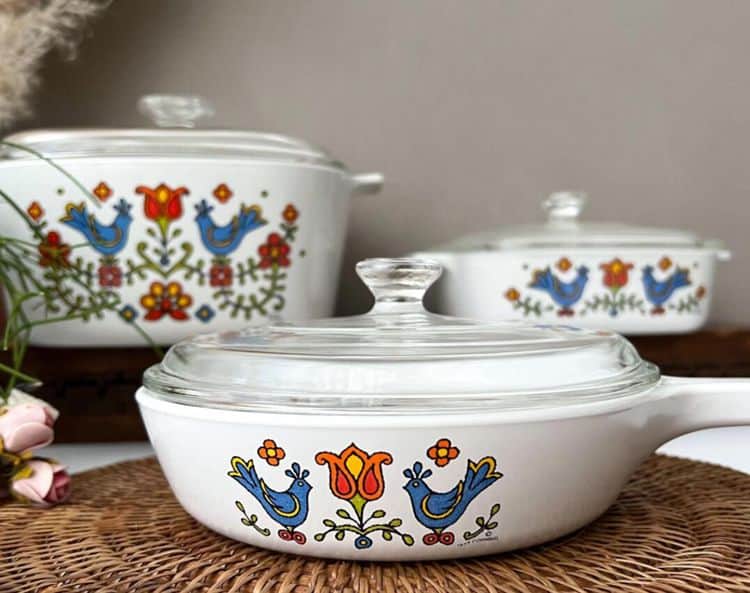
CornigWare is cookware made from glass-ceramic material, and bakeware that appeared on the market for the first time in 1958, and instantly became very popular all around the world. This isn’t surprising considering how versatile and durable these dishes are.
Due to the combination of materials used for crafting these dishes can withstand thermal shock without risk of breaking. Meaning you can, for instance, make a lasagna today, keep it in the freezer overnight, and put it in the oven the very same moment you take it out from the fridge.
CornigWare manufactured more than 750 million pieces of oven-to-table services. In 1998 World Kitchens, LLC bought the CornigWare, and today they are manufacturing ceramic-based products to stoneware.
This line is still very durable, versatile, easy to clean, and can go from freezer to oven with ease, but you can’t use it on the stovetop like dishes from the previous line. The older product lines are no longer in production.
However, they are still available from a variety of sources, even though their condition can be hardly described as “new”.
What makes vintage CorningWare valuable?
This cookware is something that stays as family heritage and a legacy. From grandma to mom, from mom to granddaughter, and with each transition the cookware stays in perfect shape no matter how many years went by.
CornigWare gained popularity due to its durability and versatility. What people love about these products is that they are considered healthy. They are non-reactive to acidic foods, they don’t leave traces of metals in food, and they are non-porous.
There were some speculations that lead from the coating of the vintage dishware can harm you. However, that ain’t true considering that lead is only used in the paint on the outside of the dish. Therefore, it is not in direct contact with your food.
The last original line of CorningWare was manufactured in 1999. After that, all their products started to show signs of increased value. The most valuable is the classical white bakeware line with the blue cornflower emblem on the side, but all patterns are in high demand.
Buyers across North America, Asia, and Australia are crazy about finding the perfect CorningWare dish, and they are ready to pay a lot of money in order to get their specimens.
Some collectibles reach the price of $10,000 at auctions. You can explore the internet, or eBay listings and see their worth for yourself.
What Are The Most Valuable Vintage CorningWare Patterns?
As I mentioned above, the last line of original CornigWare was produced in 1999, and all lines that are manufactured prior are considered vintage CorningWare specimens. Many different patterns and designs can be found today, but not all are vintage.
Therefore, to make sure you avoid scams and to know how to recognize a vintage pattern from a non-vintage pattern I made this extensive list to keep you well informed.
Cornflower Blue (1958)
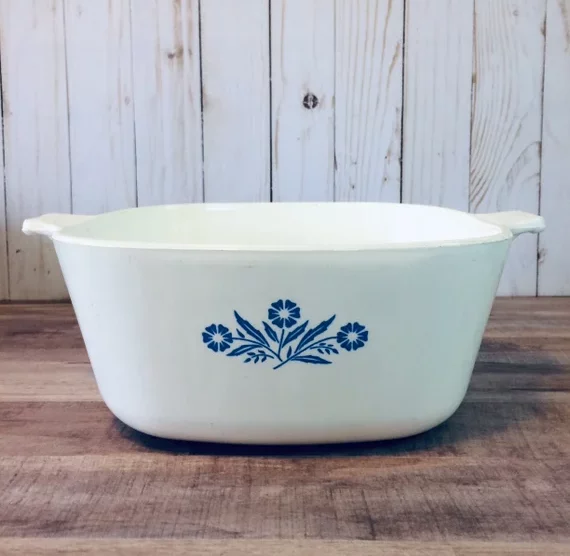
Cornflower Blue is a company’s trademark design, a most significant and most recognizable pattern. This is the first released pattern, and as being the first, naturally, this one was the most used pattern in their design. Thus, it is less valuable, but still very pretty and useful.
The blue cornflower pattern features a simple white background decorated with three blue cornflowers on a stalk with leaves. A good thing to know is that there is a difference between the first cornflower design and the rest. The very first lines had smaller handles and sloped sides.
Spice O’ Life (1972-1987)
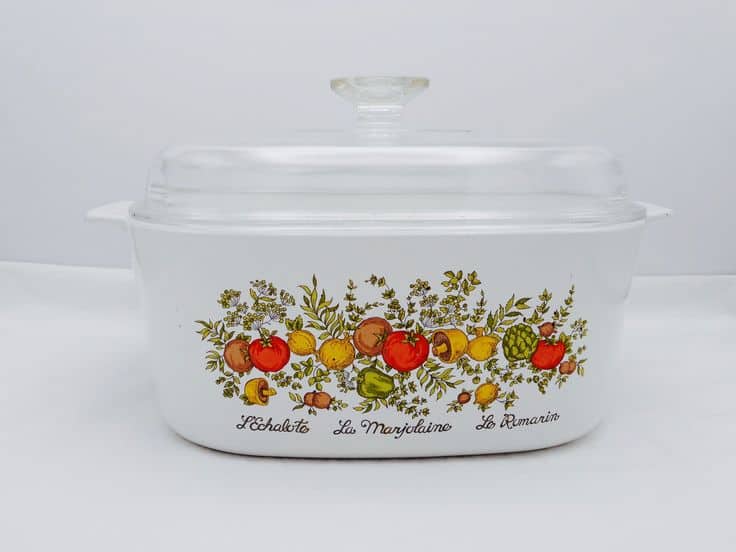
This is considered to be the second-most common pattern. Back in the 1970s, the earth tones were very popular, so CornigWare used that to create a new pattern design inspired by french spices.
The Spice O’ Life featured a band of vegetables – mushrooms, artichokes, tomato, and shallots on a field of french herbs. The background color is what they called french white.
The interesting fact is that only the earliest pieces under the vegetable pattern had written L’Echalote La Marjolaine or La Romarin.
However, being the second most used pattern certainly doesn’t mean they aren’t valuable. Some models that remained in a good condition, and with the original lid were sold for $4000 and more!
Floral Bouquet (1971-1975)
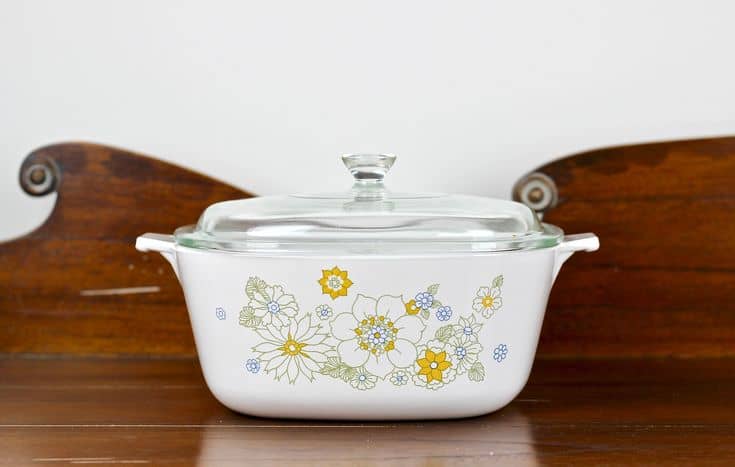
This simple and classy design is one of the rarest, it was manufactured only in the short period between 1971 and 1975. It is called the ‘Floral Bouquet’ and it came in two different versions. A regular white background, and a limited version with a yellow background instead.
The main pattern features the thin black outlines of flowers and leaves in many different sizes. The colors used for the flowers are orange and light blue, paired with pale green leaves.
Wildflower (1977-1984)
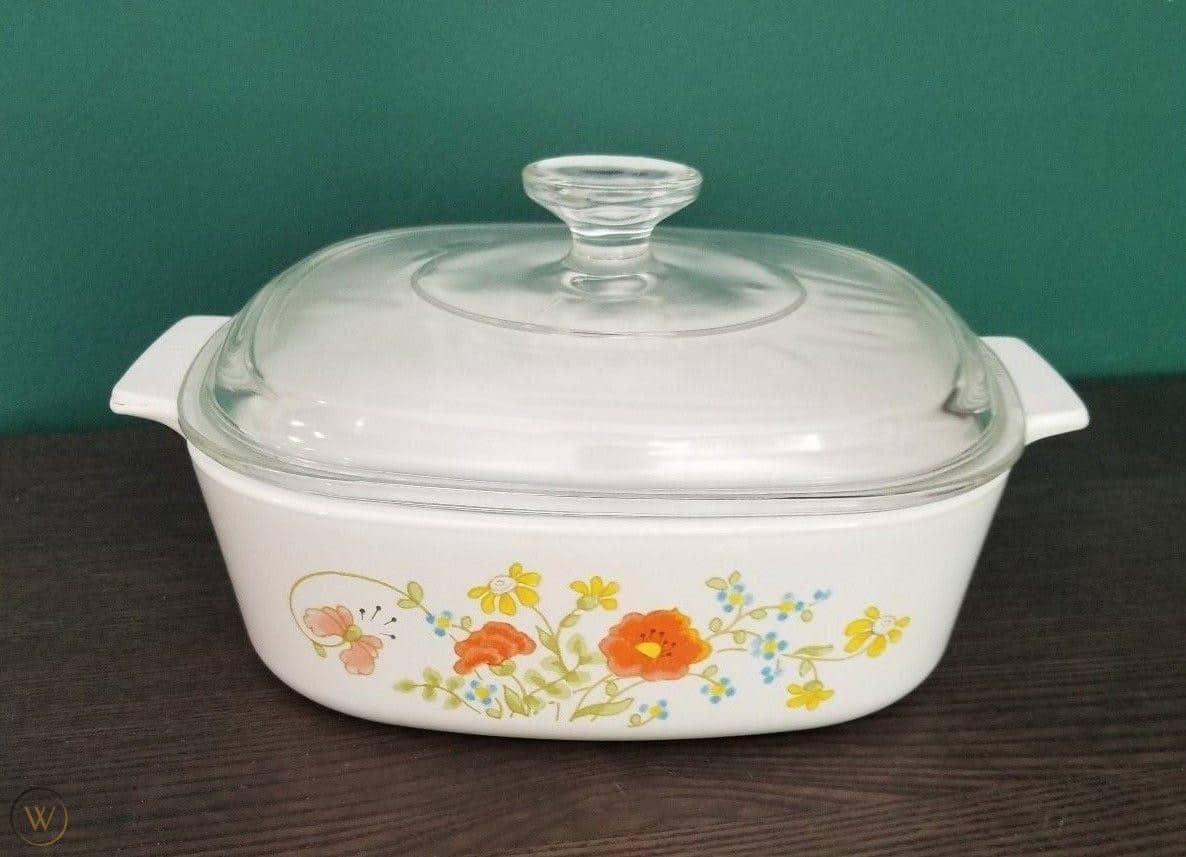
The “Wildflower” pattern is another flower pattern that is very hard to find these days. It was made between 1977 and 1984 and it was in demand due to the bright colors that they used then for the first time. Until then, CornigWare usually used soft color pallets on white background.
This design reminds you of a long summer day on a field, surrounded by rows of red poppies, small blue flowerets, and yellow daisies. They made some changes in their design in 1978, and instead of red, they featured orange poppies with blue and yellow flowers and green leaves.
Both versions of the Wildflower design are a very valuable CorningWare pattern today and the lowest price for this dish is around $100.
Country Festival/Friendship Blue Bird (1975-1976)
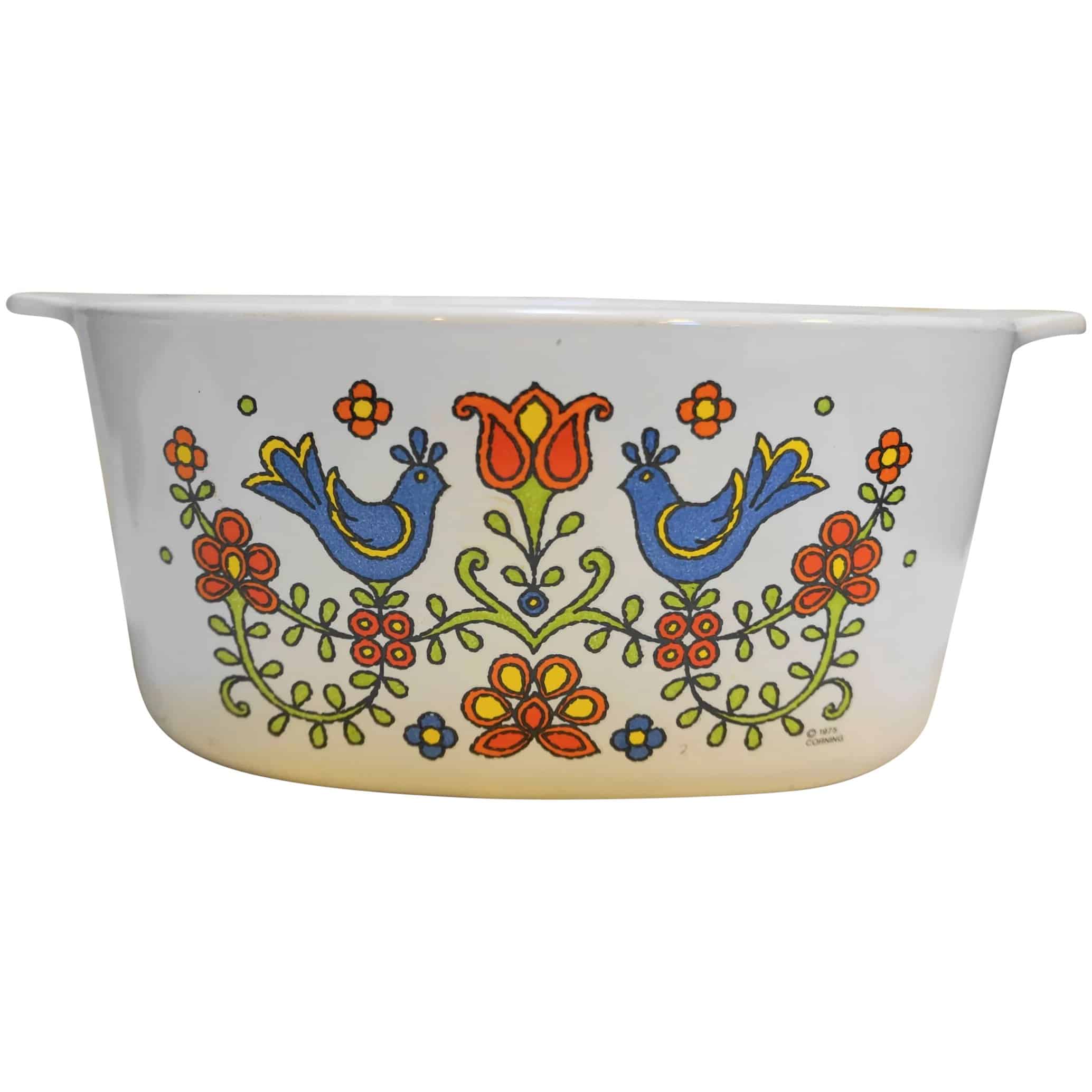
This pattern was manufactured only for a year, moreover, it is very hard to find and very valuable. The design was inspired by old symmetrical folk cross-stitching.
The pattern features a white background with two small blue birds in the field with orange and yellow tulips and green leaves.
Blue Heather (1977-1981)
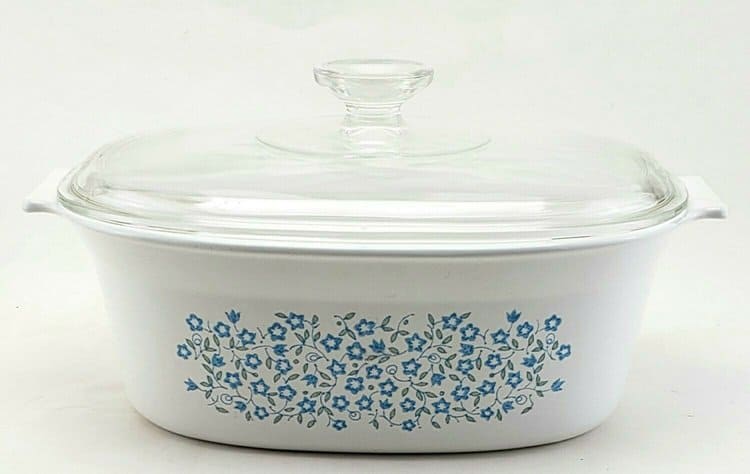
As you can see all their patterns were created to be sophisticated, and they were never mass-produced.
This line featured small five-petal blue flowers that cover most of the side, creating a flower bed that is connected by small green leaves and vinery. The appeal of this design is simple and easy on the eyes due to the miniature blue blooms that don’t jump at you like the Wildflower pattern for example.
Nature’s Bounty (1971)
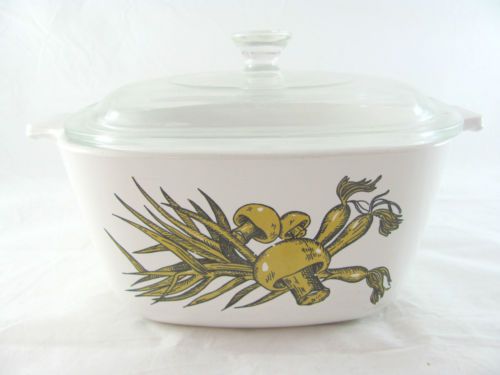
The Nature’s Bounty pattern is a limited edition that was only produced in 1971. Not many dishes were made with this print, so they are very valuable and rare. The lowest price for a dish depending on the size is around $200.
The pattern is inspired by bountiful spring and pictures a mustard-yellow harvest of different vegetables on a pale white background. Vegetables that are included are carrots with their feathery green leaves, mushrooms, tomatoes, asparagus, artichokes, and green peppers.
Starburst Pattern (1959-1973)
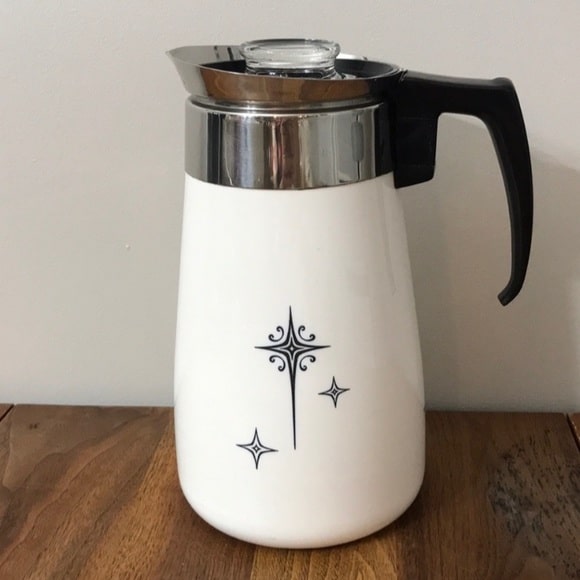
This pattern was specifically designed for coffee percolators, which are extremely rare. The last series of this product was manufactured in the late 70s. It was available in two versions, black, and blue-black combination. The blue-black version is highly collectible, so be careful when selling or trying to buy!
The simple pattern features three differently located four-pointed stars. The biggest one is prominent with rays of luminous energy bursting around. While the remaining two are smaller and glow in the distance.
The CorningWare percolators with the black Starburst design will cost you around $100, and the blue-black design a lot more.
Black Star/Black Atomic Star (1960)
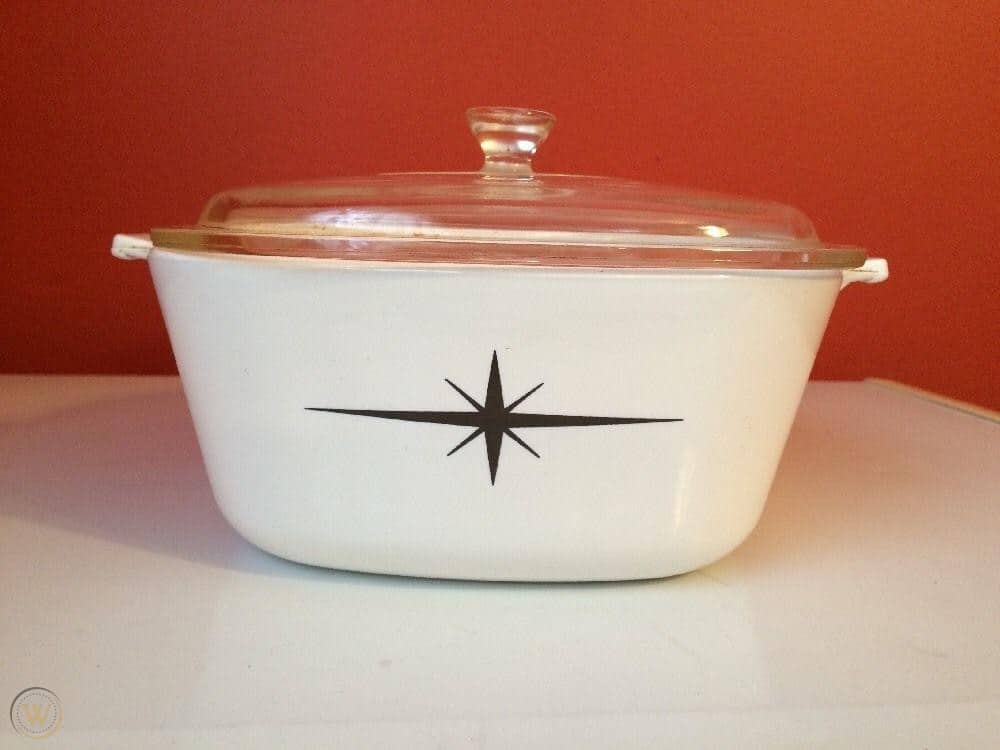
The Black Star pattern was manufactured for a very brief time during the early 60s. It only appeared on casserole dishes, so remember that. They are extremely rare and pricey.
The rough estimation is around a few hundred dollars, but since it is that hard to find one, no one can tell you the exact price. A simple yet effective pattern features a single black star with eight-pointed rays on a pale white background.
Renaissance Pattern (1970)
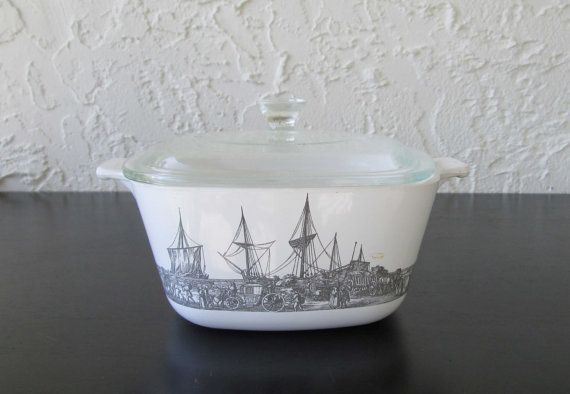
This pattern is a limited edition produced only in 1970, in some small amounts. This is also one of their most dominant CorningWare patterns since it covers almost all the dish sides, which is uncommon.
The design represents a pen-style black and white sketch of Stockholm during the renaissance era. It features very detailed sketches of a city skyline, a port, carriages, people, and a ship’s mast.
The story behind this design is that it was inspired by an etching of a seaport from Erik Dahlbergh’s book Suecia Antiqua et Hodierna.
The Medallion Pattern (1972-1974)
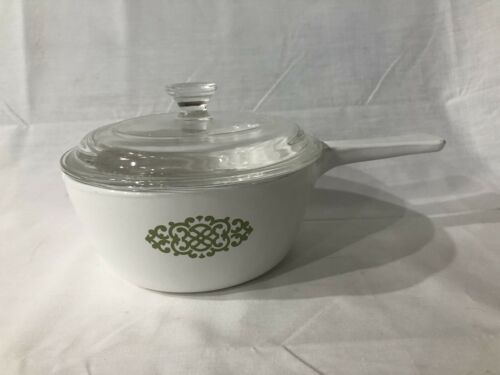
The Medallion design was produced in two colors, blue and green, and it is considered to be among the rarest patterns of all CorningWare designs. The reason is that it was crafted only for promotional purposes for Shell Oils company in the period from 1972 to 1974.
Only a few sets were made featuring these artistic lines that together create a beautiful design.
How Can I Tell If My CorningWare Is Vintage?
Unfortunately, like with all valuable things, scams are always a possibility, However, there are a few different tricks that will help you to identify a real vintage CorningWare. Those include:
Paying attention to the patterns
You probably noticed how I mentioned that none of their patterns was mass-produced. That means that different patterns were always introduced at different times. If some particular pattern is your favorite it is crucial to know the exact time when it was manufactured. Everything before or after that period is fake.
For collectors, it is very important to know the design specifics. A good example is a 1.75-quart casserole dish labeled as P 1 ¾ B, this one was produced until 1972. Only pieces crafted before 1972 are real.
Inspecting the lids.
For collectors, it is very important to know the design specifics. A good example is a 1.75-quart casserole dish labeled as P 1 ¾ B, this one was produced until 1972. Only pieces crafted before 1972 are real.
The overall design of the cookware.
During the change in design and patterns, lids were changing their shapes as well. CornigWare replaced the P7-C lid with the A7-C lid in 1972. So only the lid labeled with P is vintage. The more you learn about these vintage dishes the fewer the chances are you will get scammed.
CorningWare Using And Cleaning Tips
CorningWare is made to withstand high and low temperatures, as well as time. That still doesn’t mean it is indestructible. However, if you want your cookware to last for a lifetime, you should take care of it properly. Follow some of these usage and cleaning recommendations.
- When you use the dishes on gas or electric stovetops make sure the heat is low or medium to prevent sticking;
- CornigWare is great for oven use, but keep in mind that the lid can withstand only temperatures up to 450 Fahrenheit;
- All CornigWare are safe to use for storing food in the freezer and refrigerators;
- Never heat an empty dish in the microwave;
- When cooking always use plastic, silicone, or wooden utensils to avoid scratching the surface;
- When it comes to cleaning use only silicone pads and soft sponges and gentle dish soap without any abrasive particles;
- The CornigWare can be washed in a dishwasher, but avoid it since it can ruin the pattern on the outside.
Conclusion
If you are lucky enough you will inherit old CorningWare cookware from your grandma, and there is no doubt that you will love using it. Every piece is so carefully made that it will serve you for decades.
In case you already have experience using this amazing cooking ware, make sure you share some valuable maintaining tips and tricks with us, or some great recipes. Happy cooking.
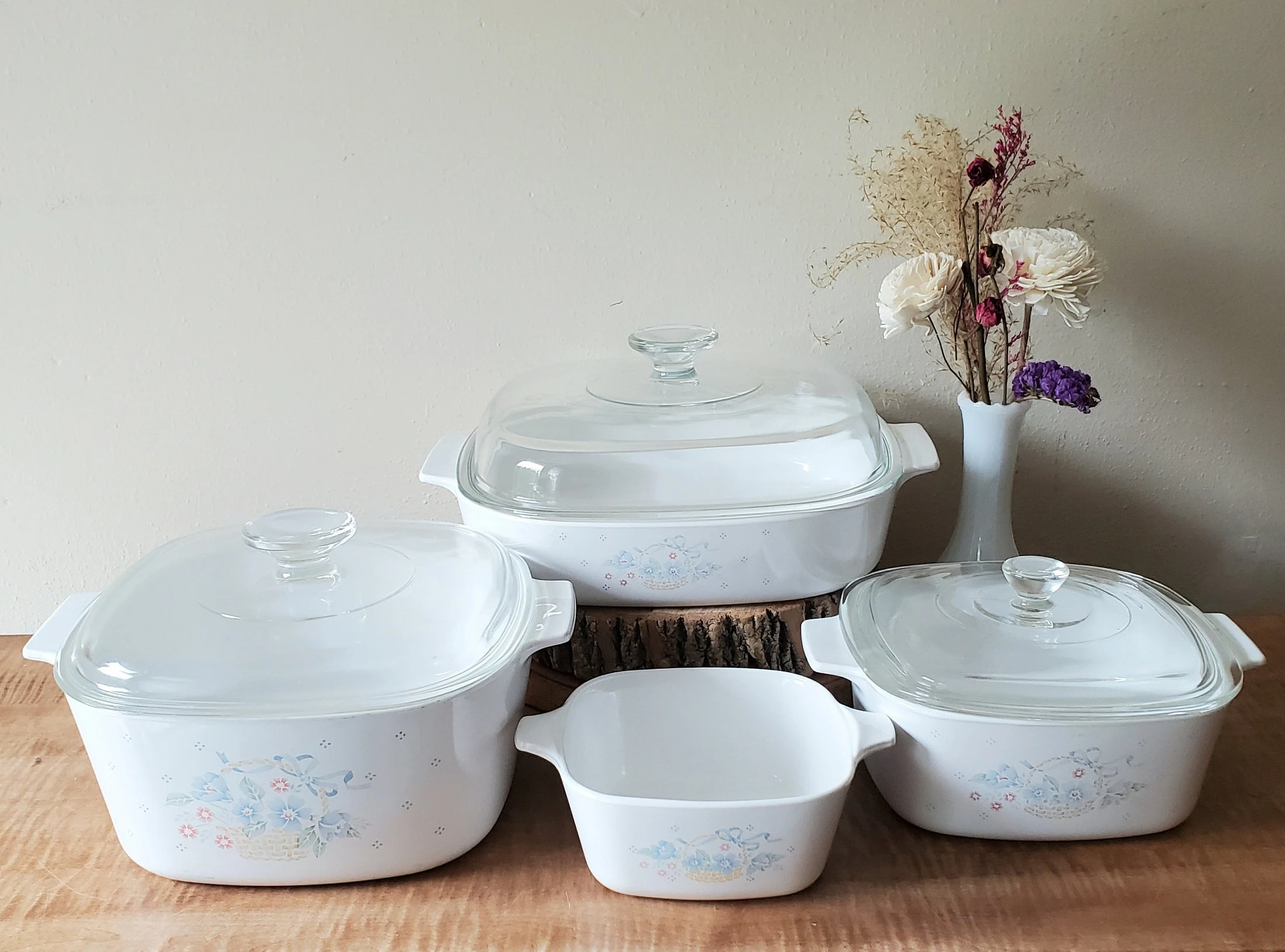
I have a 3 piece set of Corning Ware that has “Corning Ware” under the lip of the handle and the size on the other handle. It has nothing on any side. I think it’s called “Traditional” but I’m not sure. Can anyone tell me how old it is and maybe it’s value? Thanks in advance.